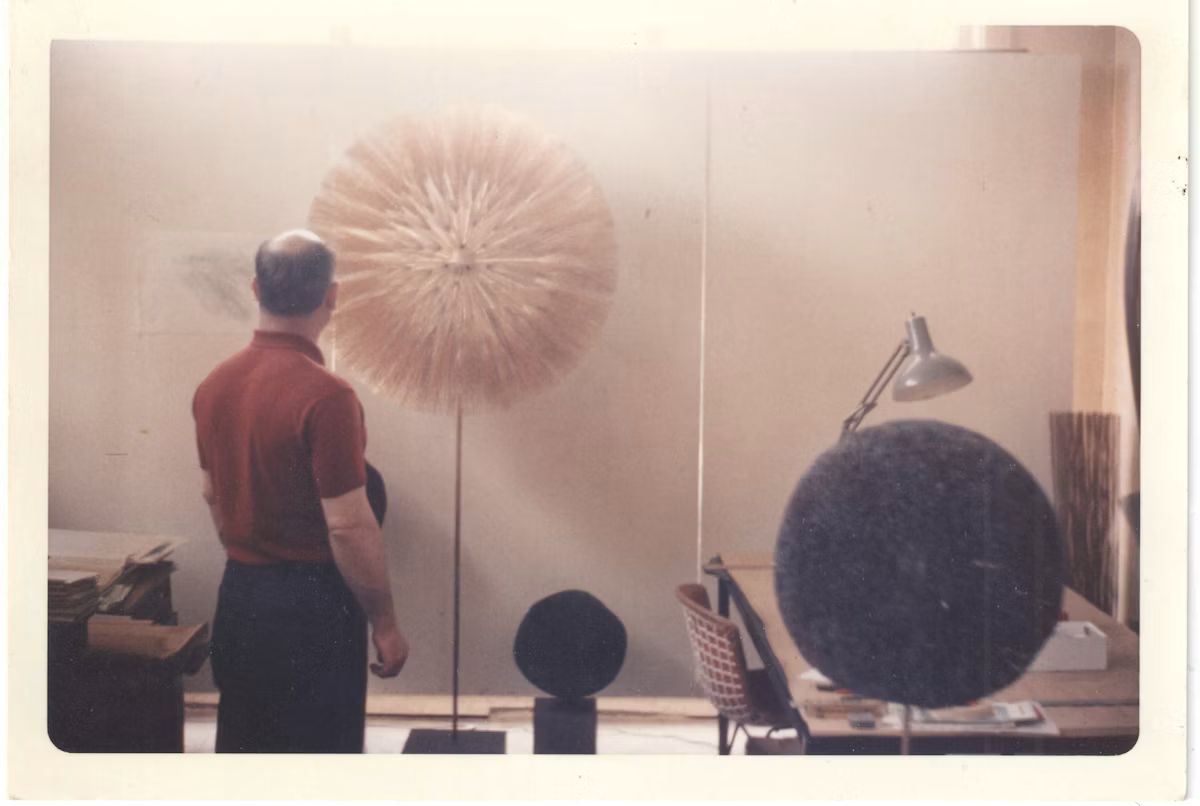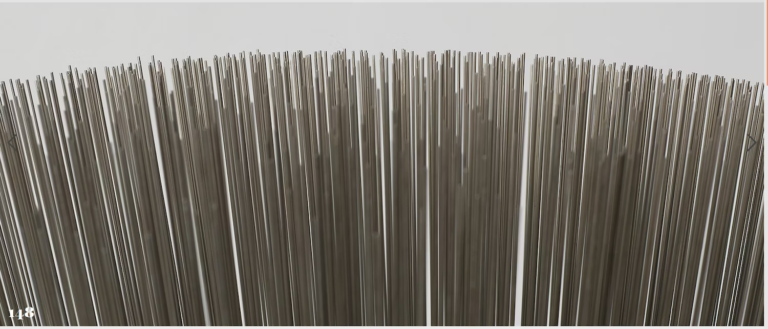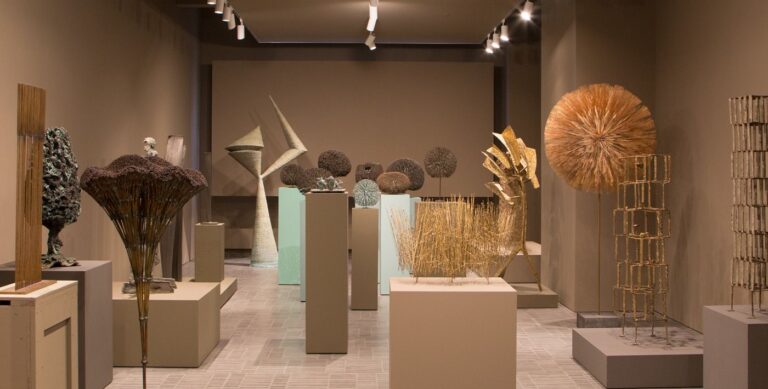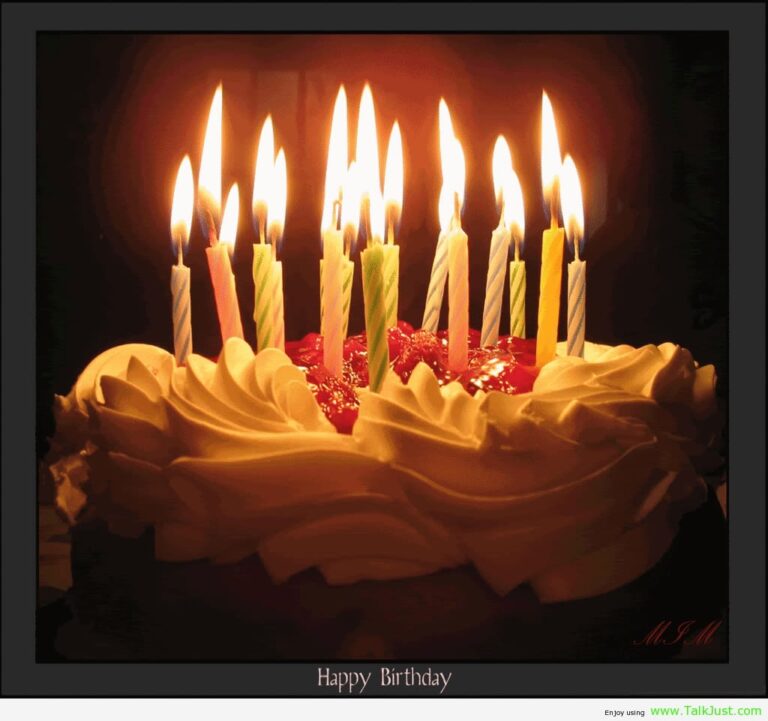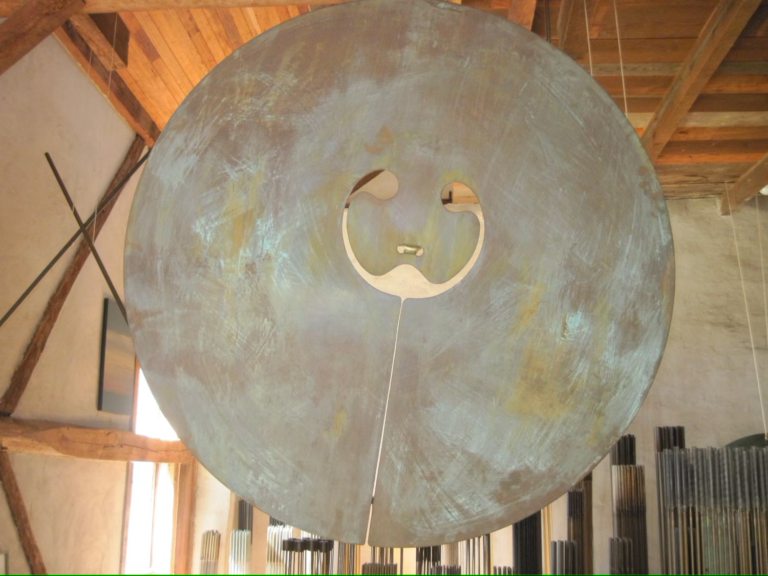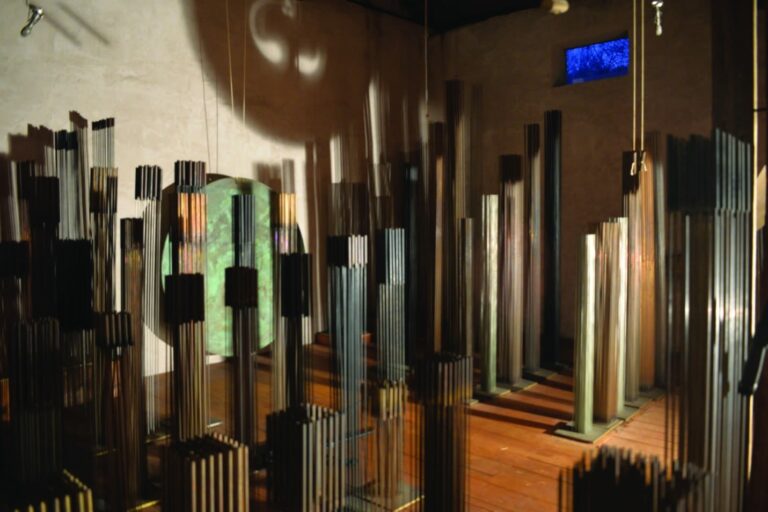The Philosophy & Work Ethic of Harry Bertoia
In the 1960s, during my childhood, Harry was in the thick of his sculptural career. Architects, galleries and fans inundated him with requests. My memory informs me that my father was not at home much during that decade. He was either away installing a monumental commission or working 12 hours a day at the Bally shop.
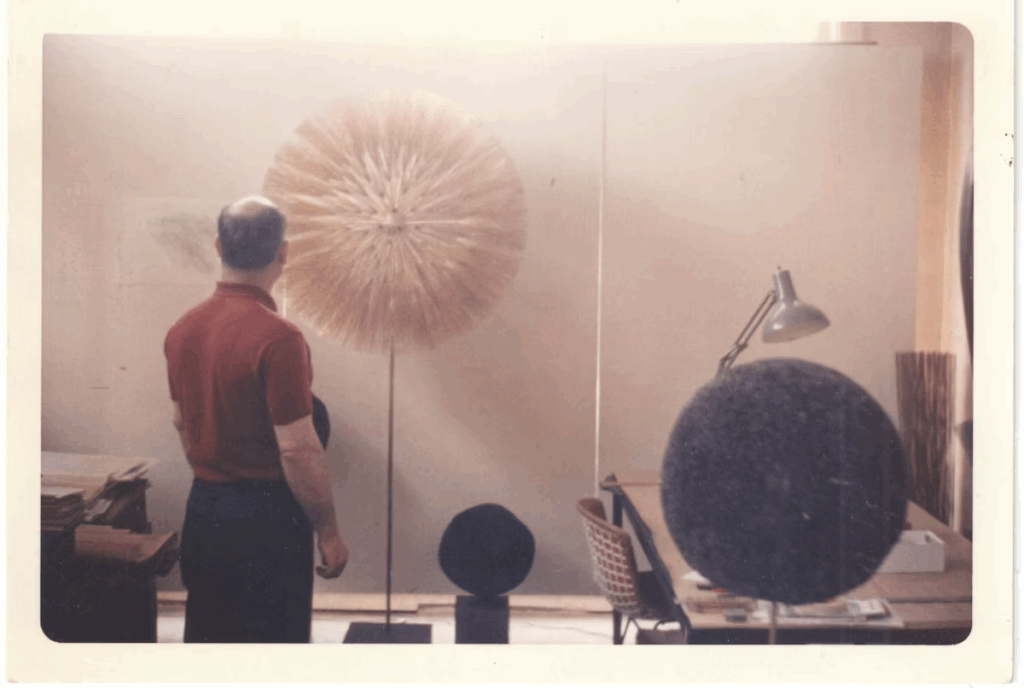
When not traveling, dinner time was the family gathering that most stands out in my mind. It was during the dinner discussions that I gleaned important clues of who my father was and what he understood of human and universal law.
One night after the plates were cleared, Harry explained his perception of how the individual fits into the greater dimensions both verbally and with a physical example. He placed a glass of water in front of us and asked Brigitta to find a fountain pen. For you Millennials and GenXers, a fountain pen was a container for the old fashioned liquid ink that drew the ink from the reservoir through a slender opening at the tip. It suited Harry’s purposes for his demonstration. As he carefully picked up the pen, he described how the soul, once departed from a dead human body, goes back into the “Great Oneness,” as he called it. As individuals on planet Earth, we go about our business and have awareness and consciousness to whatever degree our current state of enlightenment allows. But once we complete our mission on Earth (which may take a few hundred reincarnated lifetimes) we ultimately reunite with the Universal Spirit.
While talking, he placed the pen atop the glass, opened up the tip with his finger and let out a drop of blue ink into the water. “At first, you see how distinctly there is the blue ink streak within the clear water.” Harry discoursed, as he gently swirled the water, “but soon it blends into a sort of a lighter blue and then the water becomes totally clear again. Eventually that individual drop of ink is totally absorbed back into the Universe, just as the soul goes back to its source.” As he spoke, we saw the transformation of blue squiggles to clear water, just like he said. He placed the glass down on the table with a satisfactory smile as the clear water settled back into what it had looked like originally. Magic! It was such an impactful display that I never forgot it.

“Eventually that individual drop of ink is totally absorbed back into the Universe, just as the soul goes back to its source.”
– Harry Bertoia
It was this grand overview of humanity that allowed Harry to see both the details and the bigger picture in any situation. He remained true to his beliefs, did not stray from what he saw as honest and right, and worked hard to create what his inner visions instructed. When he found two galleries arguing over which had the rights to sell Bertoia at their location, Harry just laughed and let them fight between themselves. One gallery was certain that they had exclusive rights to sell Bertoia. After about a month, when both galleries were a bit frantic, Harry answered saying that, “no exclusive rights were given to anyone.” And, to all his galleries’ frustration, Harry would sell his sculptures to those who stopped by the shop at whatever price he felt fair, sometimes simply giving them at no cost. If someone expressed sincere interest in his work, or had done him a favor or two, he was quite generous.
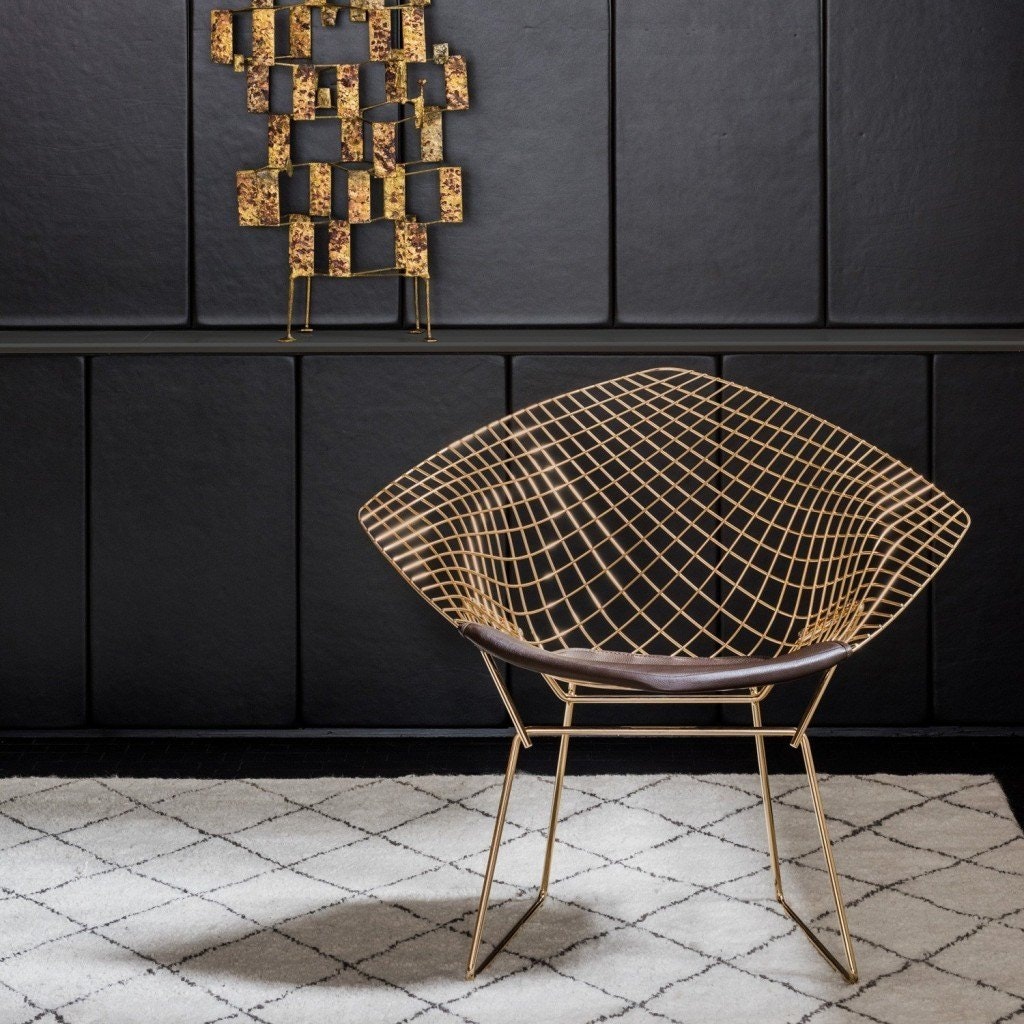
The Knoll dealers throughout the country loved to have a sprinkling of Bertoia sculptures in their showrooms in the 1960s. They would display the Bertoias along with his furniture designs. Customers became aware of this and would stop in every few months to see what new sculptures were available. The dealers often sold the sculptures for more than what Harry deemed the sales price, but they would not keep the difference. Instead they told Harry he wasn’t asking enough so they charged more and the check was written by the customer directly to Harry Bertoia. They kept no profit for themselves because they loved having his sculptures present, and they loved Harry. See the letter from the Dallas Knoll dealer to Harry.

This life approach translated to an impassioned and moral work ethic. If a Knoll dealer asked for a handful of sculptures and had treated him well, he made sure to find the time to create and send some sculptures their way. When Harry discovered that a certain gallery hadn’t made full payment on his work in several years, yet they requested more and more sculptures, he suddenly found himself too busy to oblige. In producing the huge architectural sculptures, when Harry promised the date that it would be ready, it was indeed ready and crated on that day.
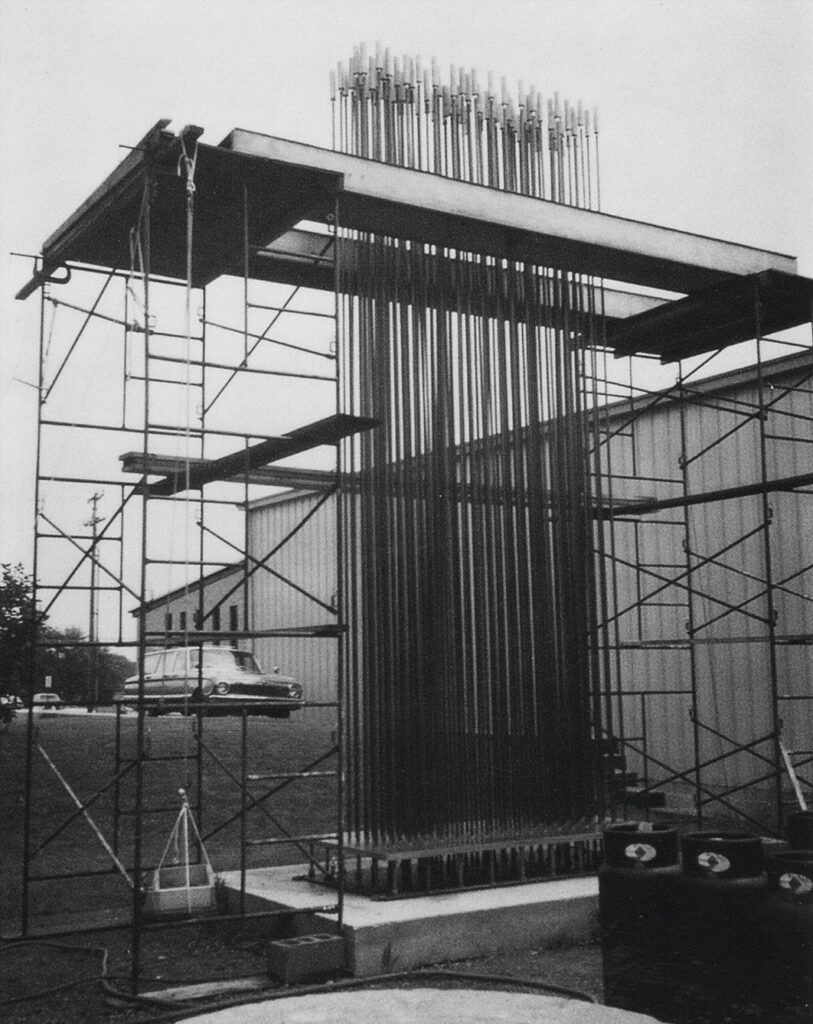
That might mean that he, and sometimes his workers, had to work overtime to meet the obligation. But the workers were always generously compensated, plus getting a Christmas bonus of a sculpture of their choosing. Harry worked all day, and usually, after our philosophical dinners, half the night. If the schedule permitted, it was the after-hours experiments that resulted in smaller, bio-morphic pieces such as these pressure melted bronzes.
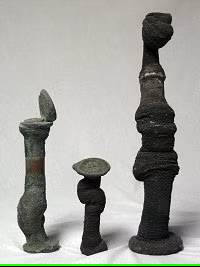
I learned much from my father, and most of it was by example. We try to carry on a similar work ethic here at the foundation. If an organization treats us well, we go out of our way to assist them when a rush order comes up. When our supporters re-tweet or praise us, we try to respond in kind.
We like to have partners as opposed to clients, and friends as opposed to fans.
Many thanks to our partners and friends!

